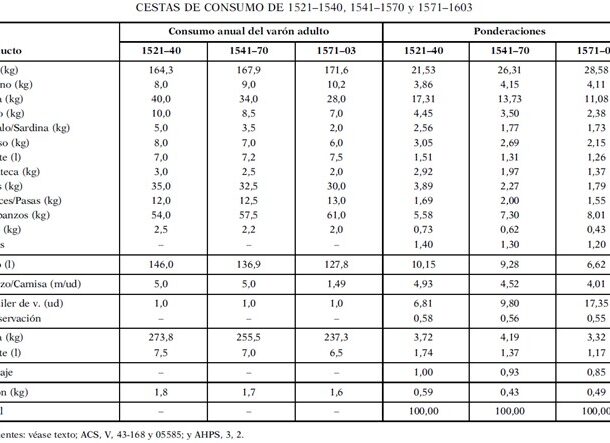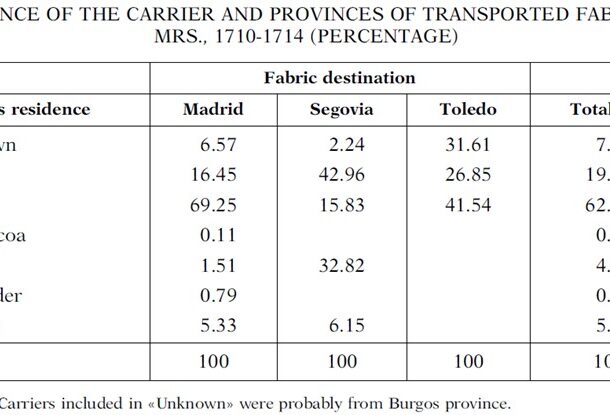
At the end of the 17th century, the main foreign textiles imported into Castile through the port of Cadiz were bayetas (43.55%), etamina (14%) and perpetuanas (12.44%), 69.99% of the total. Imports of sagra and lilac, which had dominated the market at the beginning of the century, suffered a considerable decline. These changes in consumption patterns are confirmed by the similar textile products that were imported through the port of Bilbao, where sagra accounted for 0.44%, and the sum of the bayetas and perpetuanas constituted 85.17%. Spanish merchants were one of the main buyers of cloth from England in the early modern period; by the 1480s they accounted for between 10% and 15% of total English exports.
Collection: Statistics
Project: 3. Rural world and urban world in the formation of the European identity., 4. Family, daily life and social inequality in Europe., 9. Travels and travelers: economic, social and cultural connections.
Chronology: XVII
Scope: Secondary Education, Baccalaureate, University
Resource type: Statistics
Format: Table
Source: Fernández-De-Pinedo Echevarría, N., y Fernández-De-Pinedo Fernández, E. (2013). "Distribution of English textiles in the Spanish market at the beginning of the 18th century", en Revista de Historia Económica, vol. 31, nº 2, p. 262.
Language: English
Date: 2013
Owner: Pablo Ballesta Fernández (Modernalia)
Copyright: ©Revista de Historia Económica ©Nadia Fernández-De-Pinedo Echevarría ©Emiliano Fernández-De-Pinedo Fernández
Abstract: Table showing the textile typology of English imports to the Iberian Peninsula and the evolution of consumption patterns with respect to previous times
Image
Tags






